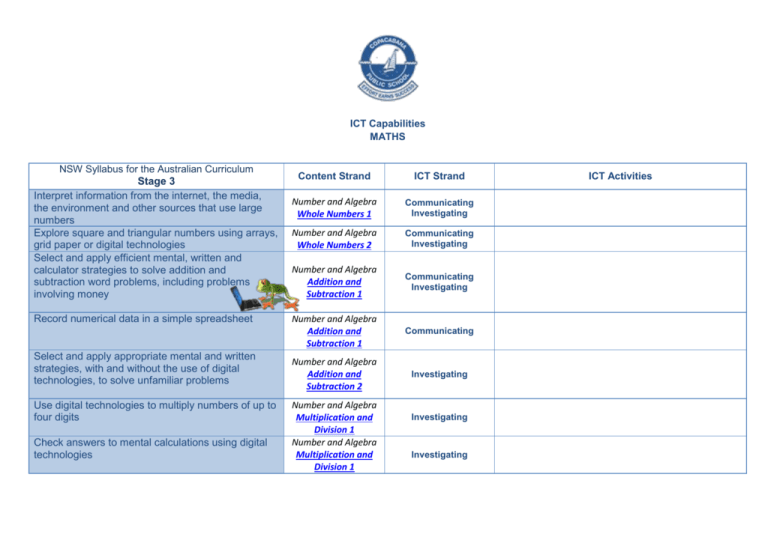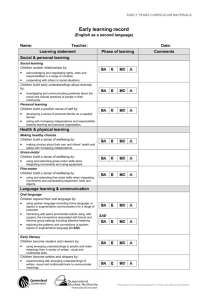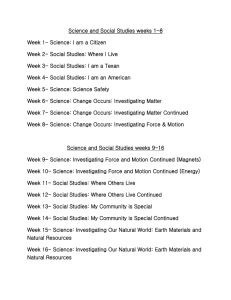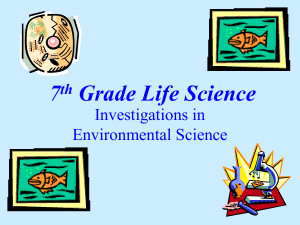File - Copacabana Public School
advertisement

ICT Capabilities MATHS NSW Syllabus for the Australian Curriculum Stage 3 Interpret information from the internet, the media, the environment and other sources that use large numbers Explore square and triangular numbers using arrays, grid paper or digital technologies Select and apply efficient mental, written and calculator strategies to solve addition and subtraction word problems, including problems involving money Record numerical data in a simple spreadsheet Select and apply appropriate mental and written strategies, with and without the use of digital technologies, to solve unfamiliar problems Use digital technologies to multiply numbers of up to four digits Check answers to mental calculations using digital technologies Content Strand ICT Strand Number and Algebra Whole Numbers 1 Communicating Investigating Number and Algebra Whole Numbers 2 Communicating Investigating Number and Algebra Addition and Subtraction 1 Communicating Investigating Number and Algebra Addition and Subtraction 1 Communicating Number and Algebra Addition and Subtraction 2 Investigating Number and Algebra Multiplication and Division 1 Number and Algebra Multiplication and Division 1 Investigating Investigating ICT Activities Apply appropriate mental and written strategies, and digital technologies, to solve multiplication word problems Use digital technologies to divide whole numbers by one- and two-digit divisors Check answers to mental calculations using digital technologies Apply appropriate mental and written strategies, and digital technologies, to solve division word problems Use a table or similar organiser to record methods used to solve problems Investigate whether different digital technologies apply the order of operations Calculate unit fractions of collections, with and without the use of digital technologies, eg calculate 1/5 of 30 Number and Algebra Multiplication and Division 1 Number and Algebra Multiplication and Division 1 Number and Algebra Multiplication and Division 1 Number and Algebra Multiplication and Division 1 Number and Algebra Multiplication and Division 2 Number and Algebra Multiplication and Division 2 Communicating Investigating Communicating Investigating Investigating Communicating Investigating Communicating Investigating Investigating Number and Algebra Fractions and Decimals 2 Communicating Investigating Calculate a simple fraction of a collection/quantity, with and without the use of digital technologies, eg calculate 2/5 of 30 Add and subtract decimals with the same number of decimal places, with and without the use of digital technologies Number and Algebra Fractions and Decimals 2 Communicating Investigating Number and Algebra Fractions and Decimals 2 Communicating Investigating Add and subtract decimals with a different number of decimal places, with and without the use of digital technologies Number and Algebra Fractions and Decimals 2 Communicating Investigating Copacabana Public School (Glenys Goffett) NSW ICT Capabilities for the Australian Curriculum Page 2 of 5 Multiply decimals of up to three decimal places by whole numbers of up to two digits, with and without the use of digital technologies, eg 'I measured three desks. Each desk was 1.25 m in length, so the total length is 3 × 1.25 = 3.75 m' Calculate common percentages (10%, 25%, 50%) of quantities, with and without the use of digital technologies Calculate the sale price of an item after a discount of 10%, 25% and 50%, with and without the use of digital technologies, recording the strategy and result Create, with materials or digital technologies, a variety of patterns using whole numbers, fractions or decimals, eg 14, 24, 34, 44, 54, 64, … or 2.2, 2.0, 1.8, 1.6, … Continue and create number patterns, with and without the use of digital technologies, using whole numbers, fractions and decimals, eg 14, 18, 116, … or 1.25, 2.5, 5, … Use bus, train, ferry and airline timetables, including those accessed on the internet, to prepare simple travel itineraries Use computer drawing tools to construct a shape from a description of its side and angle properties Rotate a graphic or object through a specified angle about a particular point, including by using the rotate function in a computer drawing program Number and Algebra Fractions and Decimals 2 Communicating Investigating Number and Algebra Fractions and Decimals 2 Communicating Investigating Number and Algebra Fractions and Decimals 2 Communicating Investigating Number and Algebra Patterns & Algebra 1 Communicating Investigating Number and Algebra Patterns & Algebra 2 Communicating Investigating Measurement and Geometry Time 2 Measurement and Geometry Two-Dimensional Space 1 Measurement and Geometry Two-Dimensional Space 1 Communicating Investigating Creating Communicating Investigating Communicating Investigating Creating Copacabana Public School (Glenys Goffett) NSW ICT Capabilities for the Australian Curriculum Page 3 of 5 Construct designs with rotational symmetry, with and without the use of digital technologies Make enlargements of two-dimensional shapes, pictures and maps, with and without the use of digital technologies Investigate and use functions of digital technologies that allow shapes and images to be enlarged without losing the relative proportions of the image Construct patterns of two-dimensional shapes that involve translations, reflections and rotations using computer software Use a street directory or online map to find the route to a given location Tabulate collected data, including numerical data, with and without the use of digital technologies such as spreadsheets Construct dot plots for numerical data, eg the number of siblings of each student in the class Interpret data representations found in digital media and in factual texts Interpret tables and graphs from the media and online sources, eg data about different sports teams Measurement and Geometry Two-Dimensional Space 1 Measurement and Geometry Two-Dimensional Space 1 Measurement and Geometry Two-Dimensional Space 1 Measurement and Geometry Two-Dimensional Space 2 Measurement and Geometry Position Communicating Investigating Creating Communicating Investigating Creating Investigating Communicating Investigating Creating Communicating Investigating Statistics and Probability Data 1 Communicating Investigating Creating Statistics and Probability Data 1 Statistics and Probability Data 2 Statistics and Probability Data 2 Communicating Investigating Creating Communicating Investigating Communicating Investigating Copacabana Public School (Glenys Goffett) NSW ICT Capabilities for the Australian Curriculum Page 4 of 5 Critically evaluate data representations found in digital media and related claims Identify misleading representations of data in the media, eg broken axes, graphics that are not drawn to scale Determine the likelihood of winning simple games by considering the number of possible outcomes, eg in a 'rock-paper-scissors' game Assign expected probabilities to outcomes in chance experiments with random generators, including digital simulators, and compare the expected probabilities with the observed probabilities after both small and large numbers of trials Statistics and Probability Data 2 Ethics/Cybersafety Statistics and Probability Data 2 Investigating Statistics and Probability Chance 1 Investigating Statistics and Probability Chance 2 Communicating Investigating Copacabana Public School (Glenys Goffett) NSW ICT Capabilities for the Australian Curriculum Page 5 of 5







